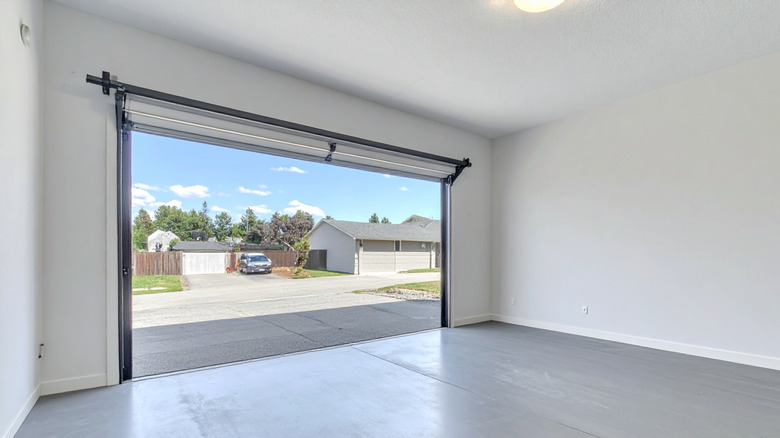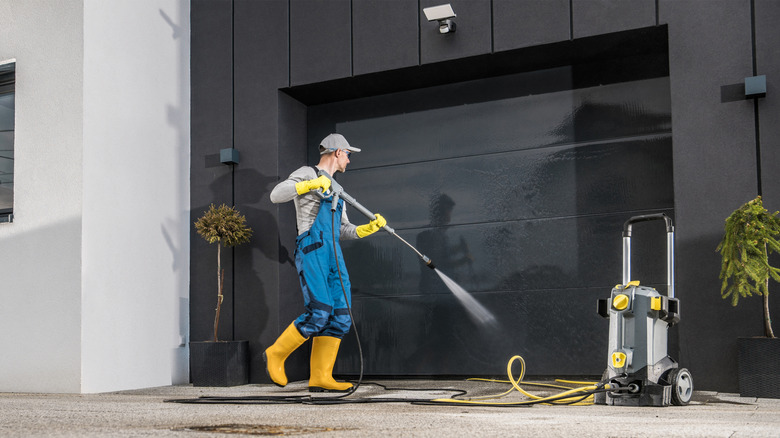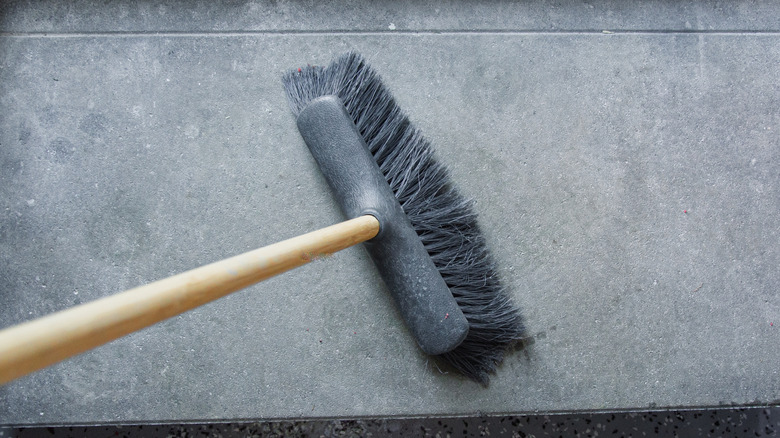 amine chakour/Shutterstock
amine chakour/Shutterstock
Keeping a tidy and organized garage is very satisfying, as it always means plenty of space to work on your projects, or it simply just provides a neat and clean area for storage. A cluttered and dirty garage is ideal for neither. While removing clutter and keeping that workbench clean is all well and good, one area that might go unloved for longer than it should is your garage floor.
Just like you sort through your garage tools every once in a while to ensure everything's still present and stored where it should be, the floor needs cleaning on a regular basis too. From a quick sweep-through to a thorough clean and reseal, keeping a schedule is the best way to ensure the finish is protected and the floor is clean, although it might not be immediately clear when you should carry out which cleaning procedures and how often.
That's why we are putting together this quick guide. It addresses different finishes, which procedures are best, how often to carry them out, and how to avoid damaging your garage floor too. If it's been a while since you have shown your garage floor some love, then chances are you need to get started with a deep clean. Ideally, you should be doing this every couple months in an active garage, and here's how.
Deep cleaning your garage floor
 Virrage Images/Shutterstock
Virrage Images/Shutterstock
The first thing to note is that if you are only stepping into your garage every once in a while for quick odd jobs or to pick something up, then no, you probably don't need to deep clean it every couple of months. This advice is based on an active garage, so it is an ideal practice for those who work away in there on a regular basis.
One of the most effective ways to thoroughly clean your garage floor is with a degreaser. This will help to remove stubborn stains from oils and greases, and doing it every two months or so will reduce the chances of such substances from permanently staining the floor. To do an effective job, first clear your garage floor and give it a good sweep. Next, use the degreaser as instructed on the bottle, whether that be applying it neat or creating a water-diluted mixture. Pour the solution on the floor, let it soak for a few minutes (again, check the product for exact timings), and then give the floor a good scrubbing with a stiff bristle brush. Repeat the process if necessary, and then rinse the area with a pressure washer to remove the cleaning agent.
Be mindful when using the pressure washer, as having it on too powerful a setting can cause damage to your garage floor, especially if it's bare concrete or painted. Top tips include not holding the nozzle too close to the floor, don't concentrate it on cracks in the concrete, and use a nozzle with a wider spray pattern to avoid concentrating too much power on one spot at any time.
Keeping a schedule with help to ensure your garage looks smart all year round
 Lera August/Shutterstock
Lera August/Shutterstock
Doing the above will stop your garage falling into a state of disrepair, but coupling that process with some other regular cleaning practices will ensure it looks the best it can day-in and day-out. The best piece of advice is simply to give the area a light sweeping on a weekly basis. Depending on how large your garage is, this should take between just two and 10 minutes. Even if you've not been busy in there, a weekly sweep will help to reduce the amount of concrete dust that occurs, and it will remove any old leaves and whatever else that's happened to blow in under the door.
Spot cleaning is important, too. If you spill a touch of oil on the floor, don't just think you'll sort it with the next upcoming degreaser session, quickly sort it there and then to avoid lasting stains from building up. If a stain does form, try scrubbing it with a wire brush — letting undiluted detergent soak on the stain for 10 minutes prior will help. You can then remove any loose excess with a scraper before rinsing and drying the area with an old towel.
Finally, an annual re-sealing of your garage floor will help to keep it in great condition for longer, and it will make cleaning it easier too, as spilt fluids will have a harder time soaking into the concrete when a fresh coating is present. If you have a different coating, such as an epoxy coating, then consult the product's manufacturer for specific guidelines on when it is best to top up the finish.




